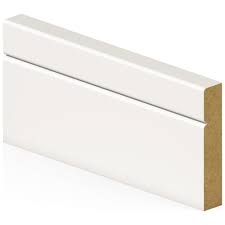In contemporary interior design, the smallest details often make the biggest impact. Skirting boards and architraves are two such elements that can instantly elevate the elegance and style of any space. While traditionally functional, modern designs have transformed these finishing touches into key style statements. Choosing the right skirting and architrave can complement flooring, wall colours, and furniture, creating a polished and cohesive look throughout your home.
What Are Skirting Boards and Architraves?
Skirting boards, also known as baseboards, run along the bottom of interior walls, covering the joint between the wall and floor. They protect walls from scuffs, bumps, and furniture damage. Architraves are the decorative trims around doors and windows, concealing gaps and providing a neat transition between wall and frame. Together, they create a structured, finished appearance that enhances both aesthetics and functionality.
Modern Skirting Designs
Modern skirting designs focus on minimalism, clean lines, and sleek finishes. Slim, flat-profile skirting boards painted in neutral shades are particularly popular, as they blend seamlessly with contemporary interiors. For a subtle accent, some modern designs incorporate hidden LED lighting along the base, adding ambiance and sophistication. Tall skirting boards with simple mouldings can also make rooms appear more spacious and luxurious while maintaining a minimalist appeal.
Contemporary Architrave Styles
Contemporary architraves follow the same clean, minimalist principles as modern skirting boards. Simple, straight-edged trims in white or muted tones create a seamless transition around doors and windows. For a bold statement, contrast-painted architraves can highlight architectural features without overwhelming the room. In high-end modern interiors, designers sometimes use flush or shadow-line architraves for a sleek, almost invisible finish that emphasizes simplicity and elegance.
Materials for Modern Finishes
Material choice plays a crucial role in achieving a modern look. MDF is a popular option due to its smooth finish, affordability, and ease of painting. Solid wood offers natural warmth and durability, ideal for premium interiors. PVC or composite trims provide water resistance, making them suitable for kitchens, bathrooms, or high-moisture areas. Selecting the right material ensures that the skirting and skirting architrave are both stylish and durable.
Coordinating with Interior Design
To achieve a truly elegant look, skirting and architrave should complement the overall interior theme. For minimalist spaces, match trims with wall colour or flooring for a seamless appearance. In rooms with bold wall colours or textures, contrasting trims can act as framing features, enhancing architectural details. Consistency in style and finish throughout the home ensures a cohesive, polished aesthetic.
Installation Tips for a Sleek Look
Precision in installation is essential for modern designs. Corners should be mitred cleanly, and gaps filled and painted for a flawless finish. Skirting boards must be level and securely fixed, while architraves should sit flush around doors and windows. For DIY projects, pre-primed or ready-to-paint trims make installation easier, while professional fitting ensures accuracy and a high-end finish.
Conclusion
Modern skirting and architrave designs have redefined how finishing touches can influence interior aesthetics. By combining functionality with sleek, elegant design, they provide a polished, stylish finish that enhances any contemporary home. Whether opting for minimalistic trims or bold accent profiles, investing in modern skirting and architrave ensures a professional and cohesive look, transforming ordinary rooms into sophisticated, well-designed spaces.


